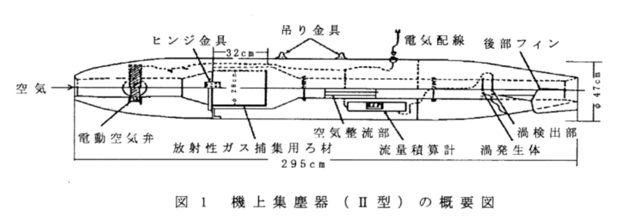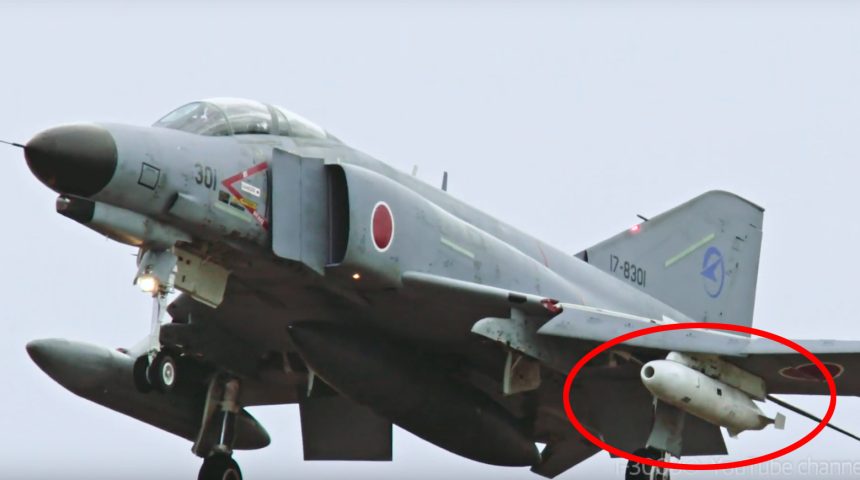This Phantom has been in service with the Japan Air Self Defense Force since it was imported from the United States in 1971. Now, it is flying a pretty unusual mission.
Phantom #301, assigned to Air Development and Test Wing (the unit that specializes in pre-operational testing and verification of JASDF equipment) at Gifu Air Base, north of Nagoya, is a pretty interesting aircraft: it is the first F-4 imported from the U.S. in 1971, hence the oldest Phantom in Japanese service.
The aircraft is an F-4EJ that has not been modernized to the “Kai” (“extra”) variant. In fact, in the mid-1980s 96 out of 138 F-4EJ built locally under license by Mitsubishi were upgraded with the installation of a new AN/APG-66J pulse-Doppler radar, a new central computer, a Kaiser HUD (Head Up Display), an AN/APZ-79 IFF system, as well as the ability to carry an AN/ALQ-131 advanced multimode electronic countermeasures pod and to launch the AIM-7E/F Sparrow and the AIM-9L/P Sidewinder AAMs (air-to-air missiles).
Phantom #301 (17-8301), is one of the first two aircraft produced by McDonnell Douglas (with eleven others being assembled locally by Mitsubishi Heavy Industries from parts manufactured and shipped from the U.S.) and has not received the upgrades: it is still flying with more or less the same “hardware” it had 49 years ago. It is quite popular among local spotters because of its peculiar tail marking that is often referred to as the “shock wave and satellite orbit”.
Noteworthy, the aircraft deploys to Hyakuri Air Base, on the eastern coast of Japan, once a month since last spring and it often carries a dust collection pod under its left wing, the same that it was previously carried by the Kawasaki T-4 subsonic intermediate jet trainer aircraft to gather air samples and detect radioactive particles.

The measurement of radioactive materials in the atmosphere by JASDF is conducted once a month since 1961 as part of the environmental pollution survey of the Cabinet Office for Radiation Control. In addition to monthly activities, collection campaigns are also carried out after nuclear tests by North Korea or after the Fukushima nuclear incident.
For these campaigns, JASDF leverages a small fleet of aircraft (that includes T-4 and C-130 Hercules) that take air samples to test for radioactive particles. In the aftermath of the North Korean nuclear tests, while the famous U.S. WC-135C “Nuke Sniffer” carried out its mission, T-4s equipped with collection pods were launched from different bases across Japan: Misawa, Hyakuri and Tsuiki airbases located in the districts of Aomori (north), Ibaraki (central), and Fukuoka (south) respectively.

A turbine blade detached causing damage to the engine on a T-4 on Apr. 2, 2019. Consequently all T-4s were grounded. The JASDF reported that engine parts for the whole fleet would have to be replaced and flying activity slowly resumed for those examples that had been fixed. Many T-4s are still waiting for engine parts to be replaced therefore it is quite likely that the radioactive detection task has now been (partly or completely) transferred to the F-4EJ fleet, with the article #301 undertaking the same collection missions previously flown by the Kawasaki trainer.
Unfortunately, #301 will perform its last flight this year. So, enjoy some cool footage of the oldest Samurai Phantom in the latest video produced by our friend Akihiro Kanai (that includes scenes of the F-4EJ carrying the dust collection pod).









